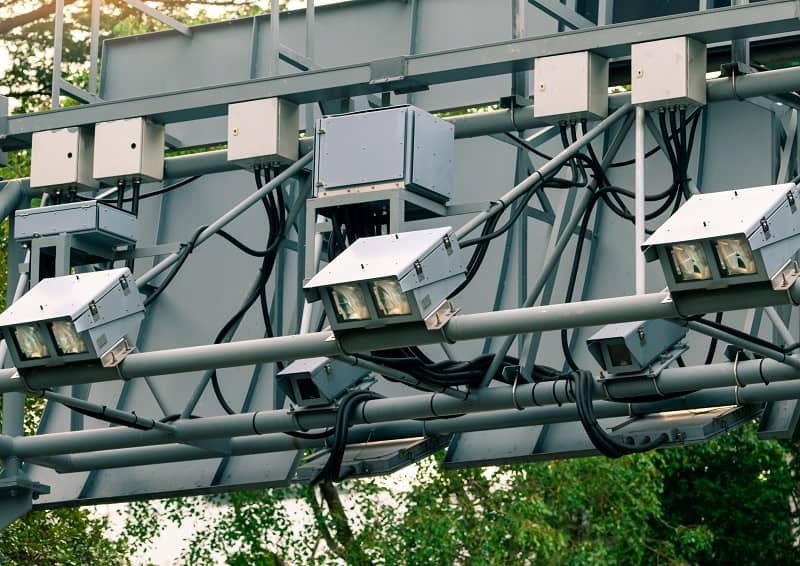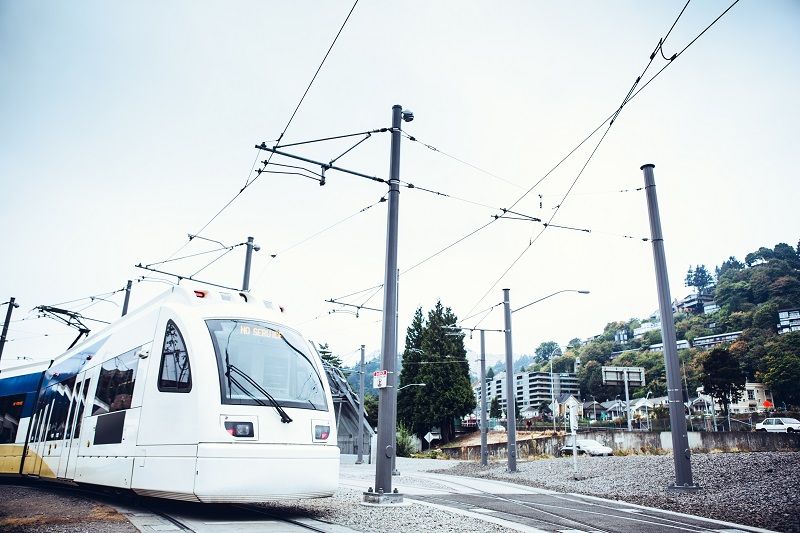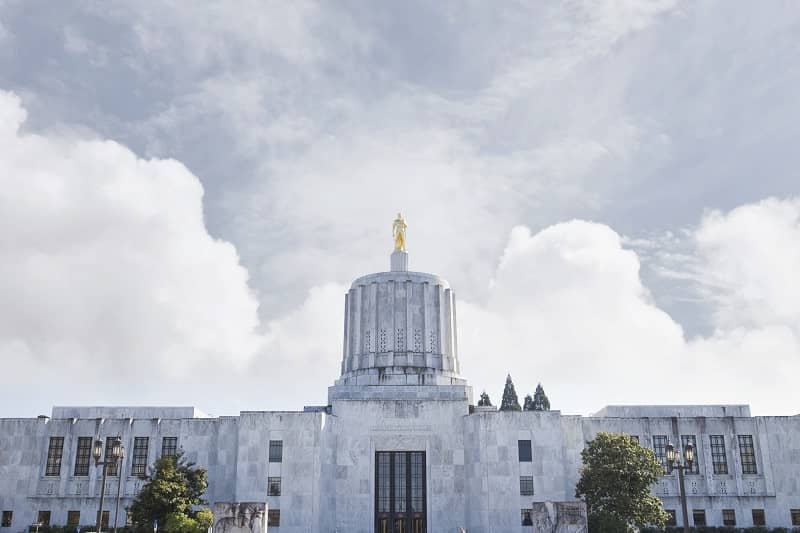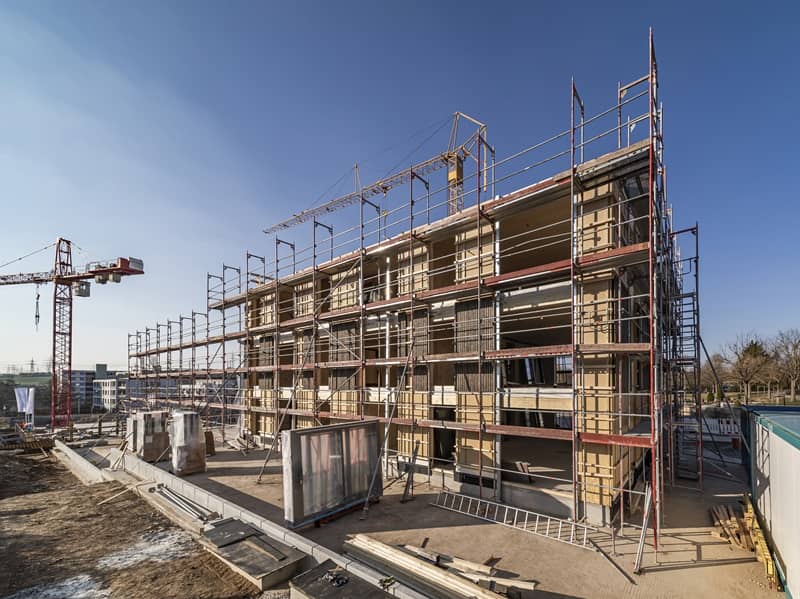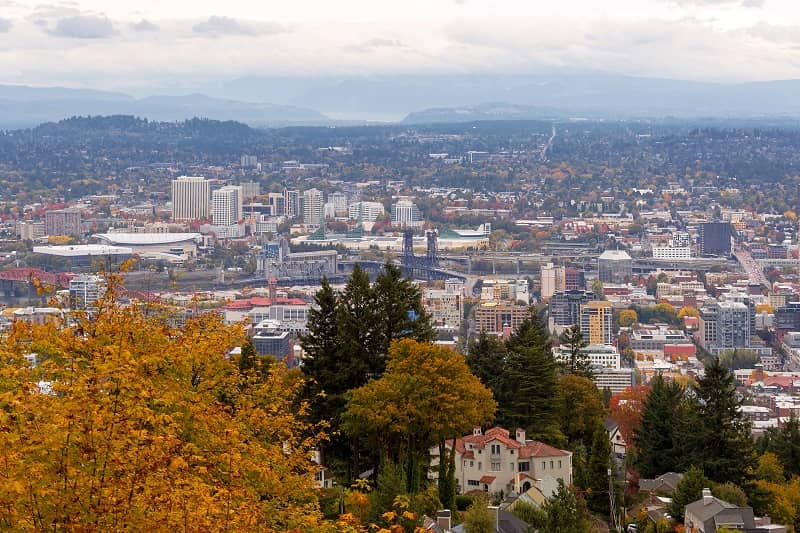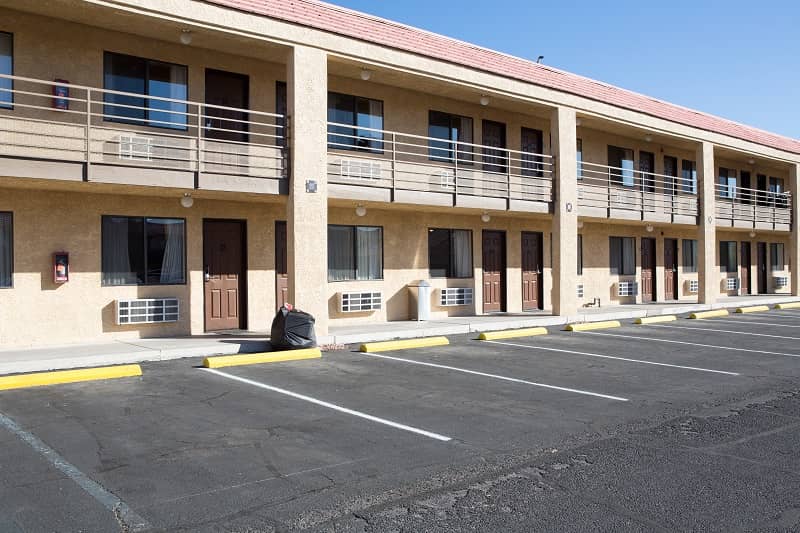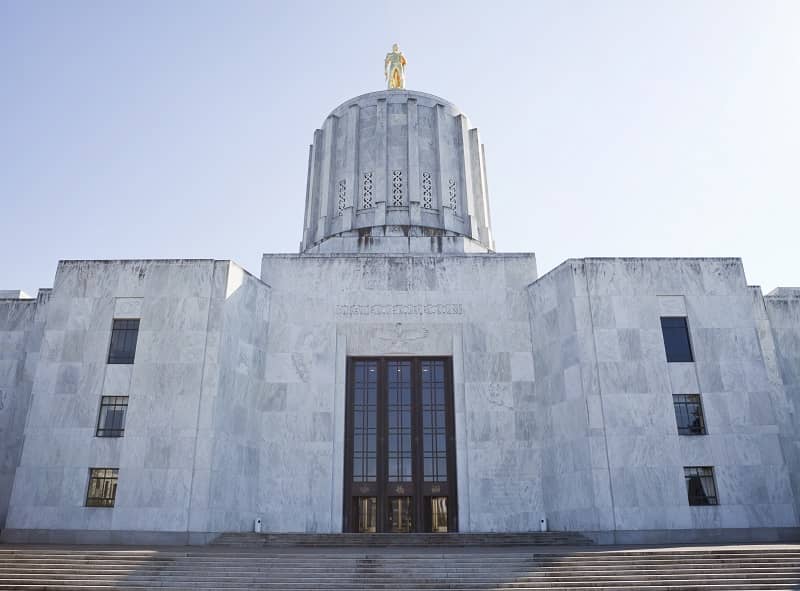Comments from Cascade Policy Institute
Eric Fruits, Ph.D., Vice President of Research
Oregon Department of Transportation
Regional Mobility Pricing Project
January 6, 2023
The Oregon Department of Transportation proposes to toll all lanes of traffic on I-5 and I-205 from Wilsonville to the State of Washington border. ODOT expects to impose the first tolls by the end of 2024.
While ODOT asks commenters to “[b]e specific,” the agency itself provides few specifics on which to comment. For example:
- With the exception of tolls on the Abernethy and Tualatin River Bridges, ODOT has given no indication—not even a range—of tolling rates, times, or locations.
- ODOT has provided little information regarding how its plans conform with federal requirements limiting the pricing of Interstate highways.
- ODOT has provided little information regarding how the anticipated use of the tolling revenues will conform with Oregon Constitution Article IX, Section 3a. The Constitution limits the use of tolling revenues to “the construction, reconstruction, improvement, repair, maintenance, operation and use of public highways, roads, streets and roadside rest areas.”
Since a road pricing policy was introduced in 2017 with HB 2017, public opinion has shifted from curious enthusiasm to outright hostility, with residents, businesses, and local governments opposing ODOT’s tolling plans. That’s because the policy objective has shifted from congestion relief to benefit all Oregonians to revenue maximization and a mish-mash of aspirations that pit different interest groups against each other. For example, according to ODOT’s Purpose and Need Statement, the agency has identified nine goals for its tolling program:
- Generate toll revenues to support transportation system spending;
- Manage congestion and travel demand;
- Shift people to carpools, mass transit, walking, biking, and teleworking;
- Limit traffic diversion to local roads and neighborhoods from tolled portions of I-5 and I-205;
- Improve safety on I-5 and I-205 and roads affected by toll-induced diversion;
- Provide benefits to underserved communities;
- Improve air quality and reduce greenhouse gas emissions;
- Support statewide economic growth;
- Maximize integration with future road pricing systems and other jurisdictions’ pricing systems.
Some of these goals contradict other goals. For example:
- Diversion of traffic to local roads is a key consequence of congestion pricing, if not an objective. It is impossible for a pricing program to simultaneously reduce congestion on Interstates and limit diversion to local roads and neighborhoods.
- The optimal charge to manage congestion is often very different—and much lower—than a toll to generate revenue.
But, ODOT notes that its “goals are not listed by order of priority,” so the public has no idea which goals are more important than others. Does ODOT prioritize congestion relief or raising revenue or limiting diversion? Without clear priorities, ODOT can impose arbitrary tolls and claim that whatever it charges is in line with its goals.
Will Rodgers famously said, “If you find yourself in a hole, the first thing to do is stop digging.” ODOT has found itself in a tolling hole, and there is an opportunity for ODOT to stop digging: Pause the tolling program and start over with a clear idea of the single most important goal of a road pricing program.
For decades, Cascade Policy Institute has advocated for congestion pricing that satisfies three criteria:
- Roadway users should pay a price equal to the costs their use imposes;
- The pricing is designed to maximize user benefits, measured by a combination of the price charged and the value of time delay associated with congestion; and
- Revenues from congestion pricing are used to improve or expand facilities in the corridor on which the charge is being imposed.
Under these criteria, the single most important goal of road pricing is to reduce congestion. Raising revenue should be a secondary consideration. Everything else should be treated as a byproduct of an effective congestion pricing program.
FROM VALUE PRICING TO REDUCE CONGESTION TO TOLLING TO RAISE REVENUE:
THE LEGISLATURE’S SHIFTING PRIORITIES
HB 2017 (2017) appears to have satisfied the key road pricing criteria in mandating value pricing on I-5 and I-205, with revenues raised to be placed in a Congestion Relief Fund. The bill specified, “[v]alue pricing may include, but is not limited to, variable time-of-day pricing” and mandated the Oregon Department of Transportation establish a congestion relief program.
Four years later, that all changed.
HB 3055 (2021) radically revised HB 2017. Tolling replaced value pricing. Variable rate tolls replaced variable time-of-day pricing. The Congestion Relief Fund was abolished and replaced with the Toll Program Fund, into which toll revenues would be placed and pledged to repay revenue bonds issued to finance tollway projects. ODOT’s mandated congestion relief program was replaced with a toll program.
The changes in HB 3055 were not mere wordsmithing. For example, there are crucial differences between tolling and value pricing. In particular, ODOT indicates tolling is focused on generating revenue for construction. While tolls may vary by time of day, the tolls do not vary with actual road conditions. In contrast, congestion pricing is focused on reducing congestion. Under a well-designed congestion pricing program, charges vary with actual road conditions. For example, charges may rise with increased congestion, or an uncongested stretch of road may have no charge.
More importantly, by replacing the Congestion Relief Fund with the Toll Program Fund, the legislature made explicit that the goal of Oregon’s road pricing program is to raise revenues. This is a significant shift because it is well-known and widely accepted that tolls designed to raise revenues tend to be higher—sometimes much higher—than the tolls needed to reduce congestion.
Indeed, ODOT recognizes that the tolls will be so high that approximately 25-30% of the population will not be able to afford them. It’s been reported that ODOT is considering subsidies or discounts of 90-100% for households at or below 200% of the federal poverty level.
Perhaps most importantly, HB 3055 removed any time deadlines for road pricing projects. ODOT is under no time pressure to impose road pricing on I-5 or I-205. The agency can pause the program indefinitely and still satisfy state law.
MOST ROAD USERS WILL FIND IT IMPOSSIBLE TO AVOID ODOT’S TOLLS
Oregon economist Art O’Sullivan’s popular Urban Economics textbook identifies four ways in which congestion pricing can decrease traffic volumes and reduce congestion:
- Shifting time of travel from higher priced periods to lower-priced periods. The most recent data from the U.S. Bureau of Labor Statistics indicates that more than 40% of wage and salary workers cannot vary when they begin and stop working. Many aspects of our daily lives are dictated by inflexible scheduling, such as dropping off or picking up kids from school, doctors’ appointments, and public meetings.
- Changing travel route from a tolled road to a non-tolled road. But, by tolling the entire stretch of I-5 and I-205 from Wilsonville to the Washington border, users have no reasonable non-tolled alternatives. Even so, if even a small share of drivers shift from the Interstates to arterials and side streets, congestion can worsen on all roads throughout the corridor. I experience this first-hand in my neighborhood in Northeast Portland: Sandy Boulevard becomes congested when traffic is backed up on I-84 and I-205. When Sandy becomes congested, traffic increases on other arterials (such as Glisan Street) and residential streets. It is clear that ODOT has no idea of the extent to which any tolling program will divert traffic to roads that cannot handle additional traffic. ODOT claims it would mitigate such diversion by funding “traffic calming” in affected areas. This could have the unintended consequence of sending traffic back to the same Interstates that ODOT is trying to get vehicles off of.
- Modal substitution from single-occupancy vehicles to carpooling, mass transit, bicycling, walking, or not traveling at all. It is doubtful that bicycling or walking are reasonable alternatives to Interstate vehicular travel. Moreover, TriMet has notoriously slow and unreliable bus service in the suburban areas of the Portland region and abysmal service along much of the I-205 corridor. For example, during the AM peak travel period, a trip from Wilsonville to PDX would take 35-55 minutes by car but more than two hours by public transit. A trip from Tualatin to Clackamas Town Center would take about 30 minutes by car, but 1 hour and 45 minutes by public transit. TriMet appears unprepared for a mode shift to public transit, with the agency’s lobbyist saying, “We have never done this before” and “This stuff makes me nervous as a cat.”
- Change of home or work location to reduce travel costs. It is thought that aggressive tolling will nudge people to move or change jobs to reduce their commuting costs. For decades, Oregon planners and policymakers have been trying to press residents and businesses into ever-denser regional centers. For decades, this policy has failed, and the failure has grown since COVID-19. Businesses are leaving downtown Portland, and the city has seen a decrease in population as people move to the suburbs or elsewhere in and out of the state. With urban housing prices becoming more unaffordable, it is unlikely that tolling would do much to encourage greater density.
UNDER ODOT’S PLAN, NO ONE WILL BE BETTER OFF, AND EVERYONE WILL BE ANGRY
Put simply, ODOT’s plan to toll all of I-5 and I-205 will be a massive policy—and political—failure. Voters will be outraged that they will be paying tolls 24/7 on highways they already paid for but no noticeable reduction in traffic jams.[1] They will be shocked to see ODOT’s tolling devices draining their bank accounts. Residents will complain of diverted traffic speeding through their neighborhoods. Then they’ll complain about all the speed bumps and other traffic calming measures that make their daily lives miserable. Local governments will face increased road maintenance costs from the increased traffic diverted from the Interstates.
Tolling programs can be successful and popular. For example, in California, the SR-91 Express Lane project has been successfully operating for 27 years. The project added new road capacity and charges tolls for using the express lanes. The lesson for ODOT is that road pricing is most popular when coupled with improved facilities that provide superior travel times.
SEVERAL SOLUTIONS TO STOP DIGGING ODOT’S TOLLING HOLE
The most straightforward solution to avoid the impending failure of ODOT’s tolling program is for the agency to pause the tolling program and start over with a clear idea of the single most important goal of a road pricing program. HB 3055 removed any timetable for road pricing. ODOT should take advantage of the law to take a break and go back to the drawing board to develop a plan that maximizes the benefits to Oregon’s transportation system users by developing a road pricing system that balances the cost of the tolls with the costs of congestion.
If ODOT insists on continuing with its self-imposed timetable, then the agency should invoke HB 3055’s mandate for variable rate tolls by identifying stretches of the Interstates and times of day for which the variable toll rate should be zero. Some parts of I-5 and I-205 are relatively uncongested for many parts of the day and should have a zero congestion price. In fact, ODOT should consider charging negative prices in some cases to encourage users to shift their travel to uncongested portions or time periods. Such “feebate” programs are used in various policies, especially those attempting to reduce greenhouse gas emissions.
Lastly, the legislature needs to revisit HB 2017 and HB 3055. Public opinion has turned against tolling in Oregon. Signatures are now being gathered on a ballot measure to require voter approval of any tolling project. The legislature should pass legislation that:
- Bans road pricing on any road unless the pricing is associated with a new road or expanded roadway capacity in the corridor being priced; and
- Requires any road pricing program to make congestion relief the primary objective, with the charges imposed no higher than the costs of the congestion being relieved.
Oregonians need to know that the money they are paying for road pricing will be used to improve the roads they are using.
Respectfully submitted by:
Eric Fruits, Ph.D.
Vice President of Research
Cascade Policy Institute
[1] For example, ODOT notes, “With the planned project, congestion on I-205 would be about 2 hours per day in 2045.”
